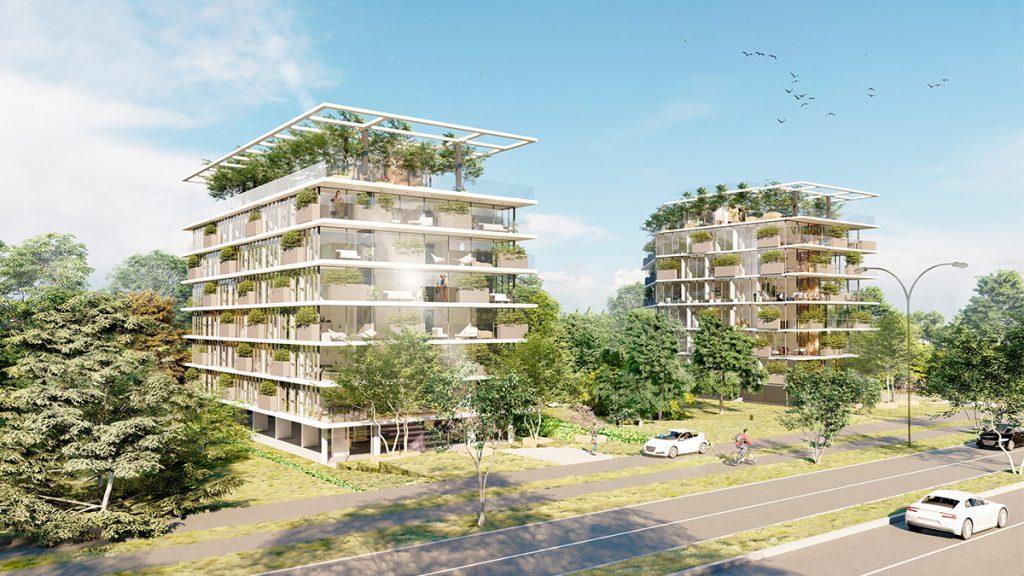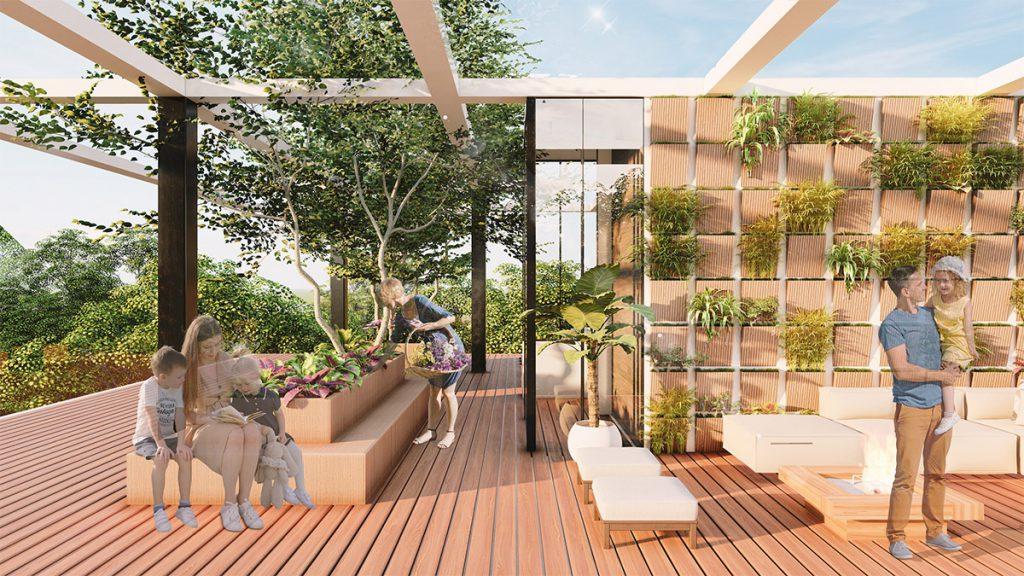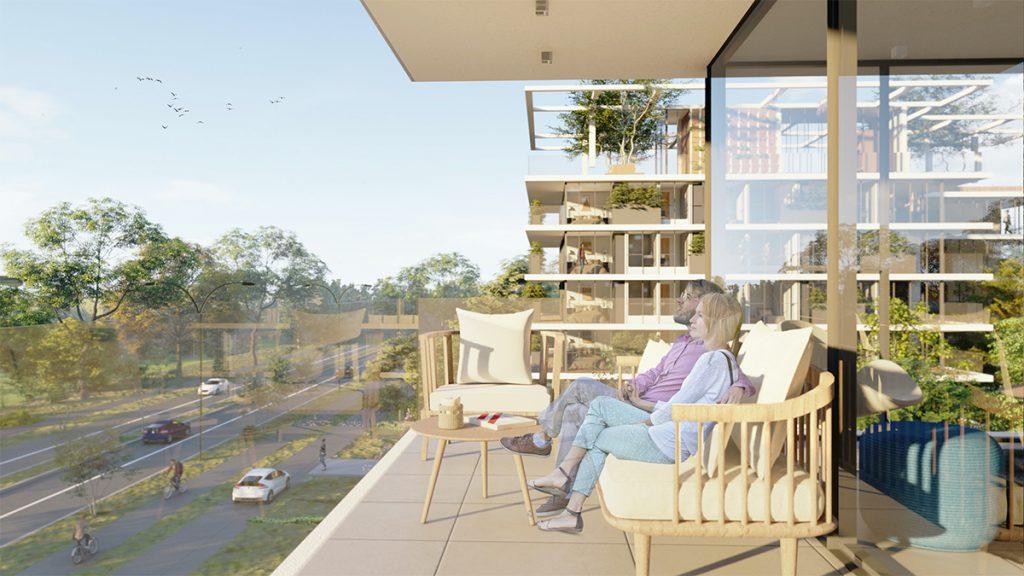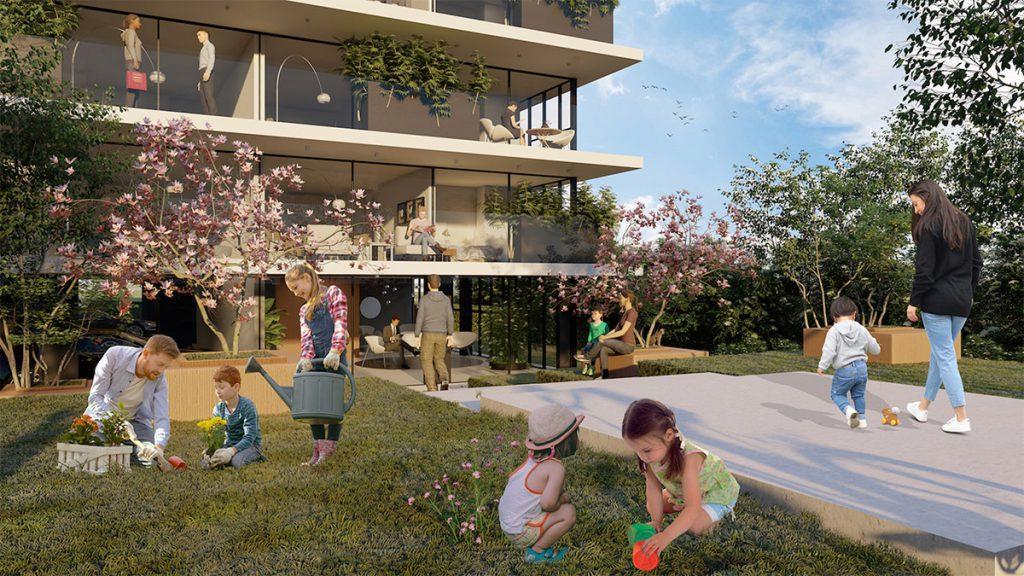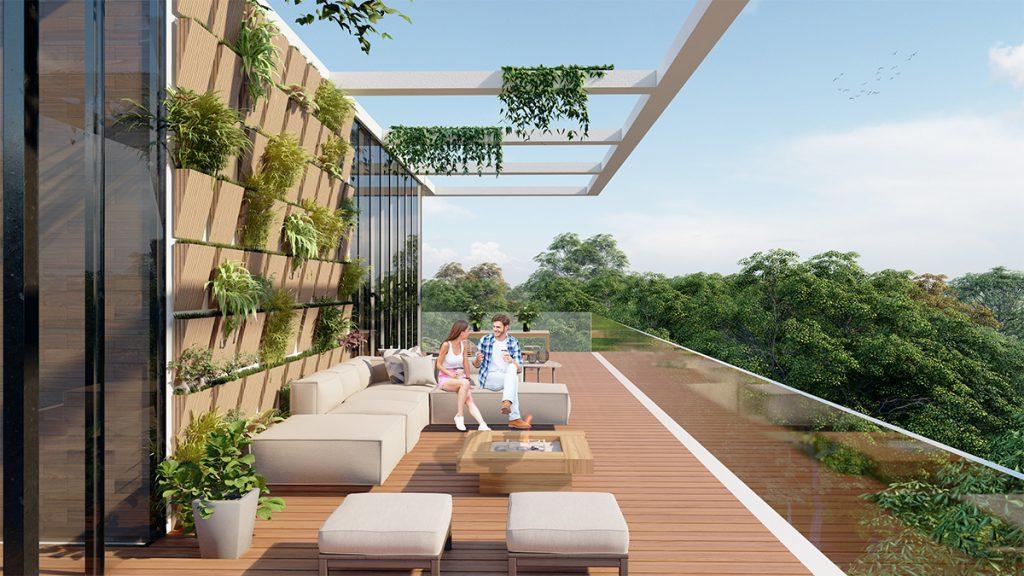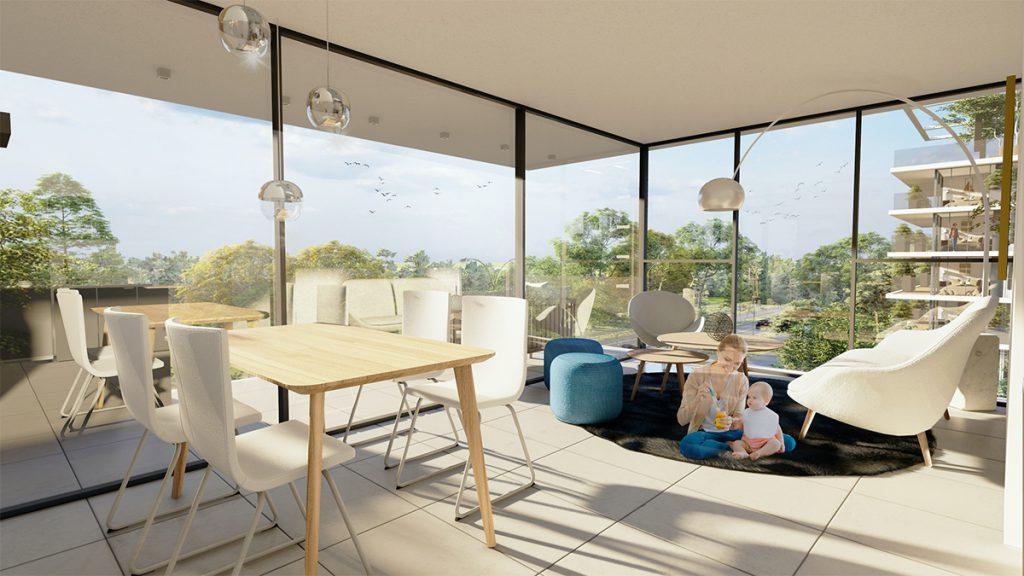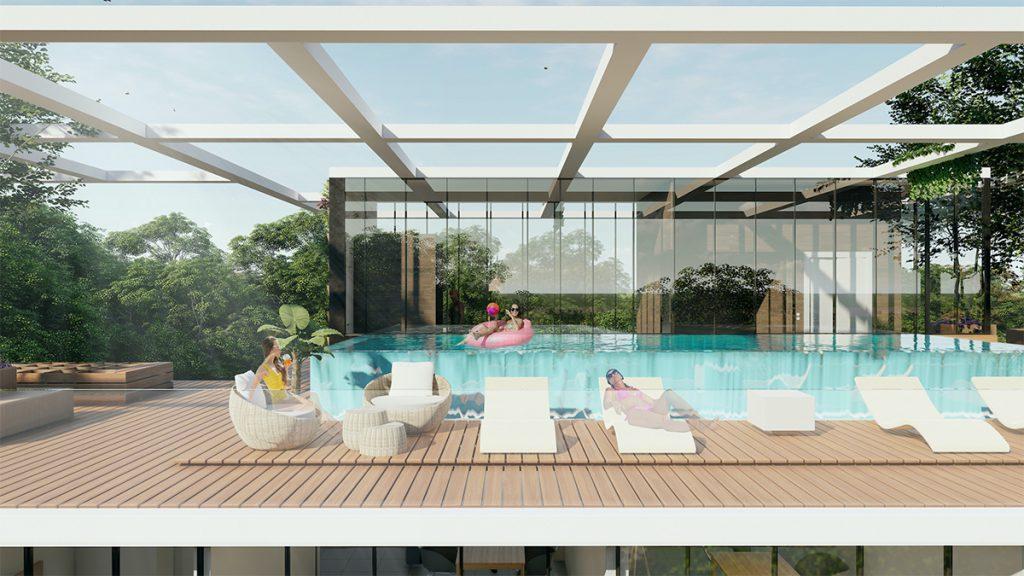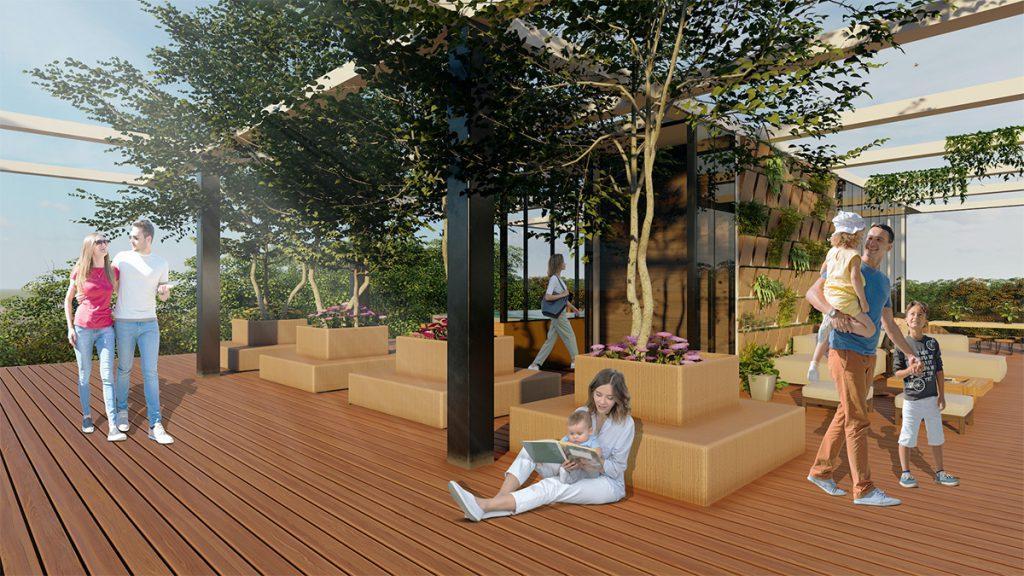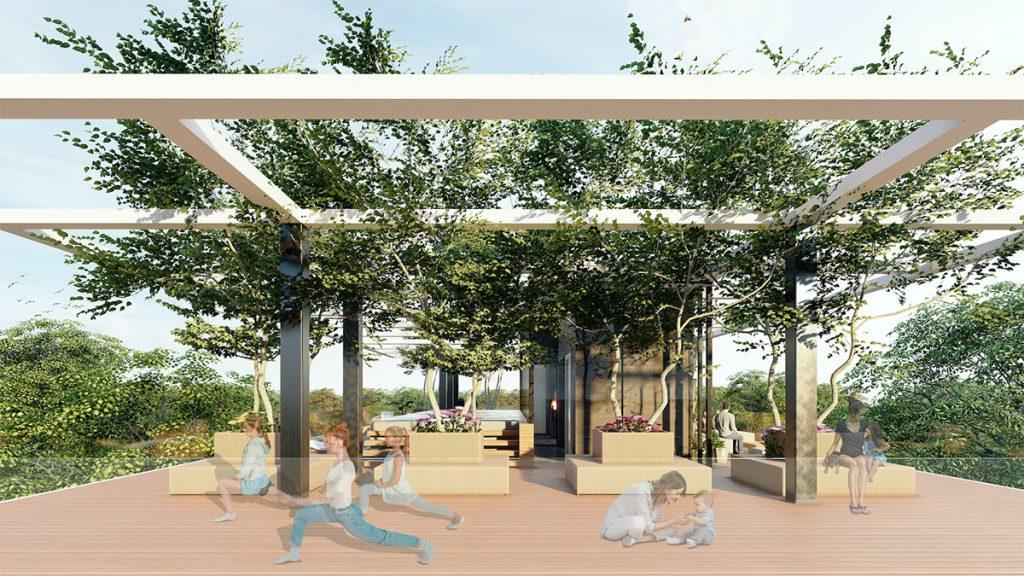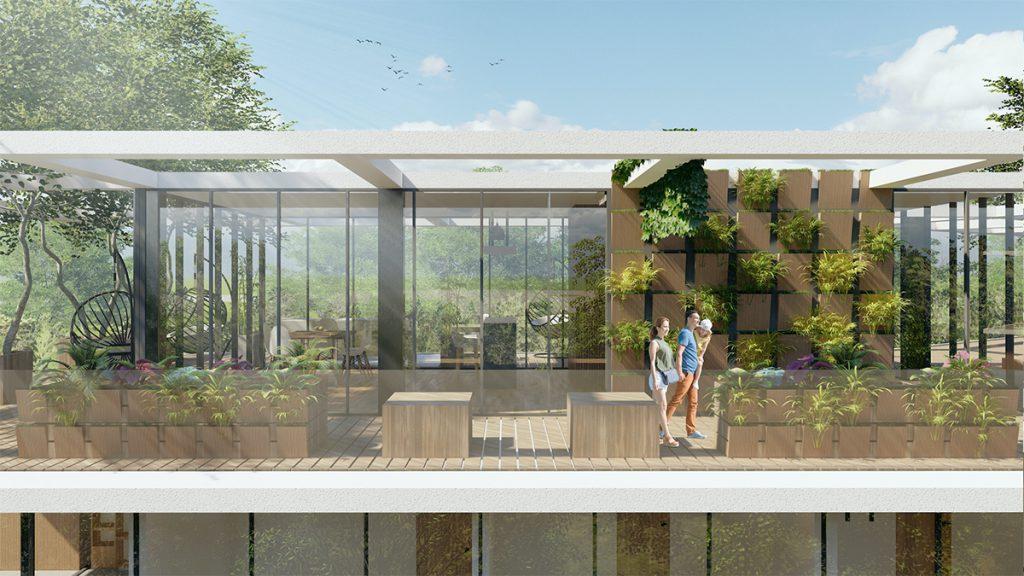The successful Otto Buildings
Award-winning and energy-efficient: designed by Guevara Ottonello Arquitectos, the Otto Buildings in Uruguay are a showcase for attractive and sustainable social housing.
Punta del Este is a favourite holiday destination. Between December and March, the city’s beaches are regularly filled with crowds of wealthy guests from Argentina. This naturally pushes up the cost of living, which is higher here than elsewhere in Uruguay even outside peak season, when many businesses shut up shop. So it is good to note that funding and support from the government are available for the construction of council flats. Especially when projects like the Otto Buildings are built, which offer the citizens of Punta del Este affordable and habitable living space.
The Otto Buildings are two eight-storey structures with 36 apartments each, designed by Guevara Ottonello Arquitectos. Otto Uno is the first of the two, completed in 2021 and the winner of several awards. These include an A’ Design Award and recognition as the Best Architecture Multiple Residence Americas. Besides this, the project reached the illustrious final of the World Architecture Festival 2021 (category: Residential – Future Project). Work on the second building – Otto Dos – was concluded soon after.
Solving housing shortages with eco-friendly designs
The objective of architects Natalia Ottonello and Ian Guevara, who themselves live in Punta del Este, is to create designs that serve the city, environment and society. Their concept provides an example of how local housing shortages can be solved inexpensively while still being kind to the environment.
The architects have stated biophilic design as their most important source of inspiration for the Otto Buildings. Simple, functional structures with copious vegetation were consequently developed, providing modern comfort with healthy living in surroundings that are close to nature.
Plenty of glass and greenery
Typical local plants and trees on balconies and the roof create splashes of green across the glass facade and give the building its vibrant look. Floor-to-ceiling glazing allows daylight to flood the interiors and grants a clear view of the greenery outside on the premises and beyond.
The rooftop terrace is where residents can relax and also meet up. Its arrangement like a town square helps them to socialize freely.
Living better together
According to the architects, the main objective for their design was to “encourage social contact and prioritize a contemporary living style with balconies and terraces with room for greenery”. Besides this, the Otto Buildings are expected to inspire residents to pursue a healthy lifestyle by cultivating their own vegetable garden.
Guevara Ottonello states that sustainability is at the core of their design approach, and this is perceptible in the Otto Buildings as well. The rooftop garden is densely planted with native plants, as an environmentally friendly means of lowering energy consumption.
Efficiency in the Otto Buildings
Irrigation for the premises is provided by a rainwater retention system. In addition, efficient, eco-friendly technologies enable the buildings to generate their own energy.
With cleverly planned building geometry, careful design of floor plans and a well-considered selection of construction materials and technologies, the architects have been able to use the economic resources available for their project to the best possible effect. They passionately believe that the construction of social housing is an essential element of a more democratic city.
Future-oriented architecture
The necessity of making sustainable and habitable living available to people with low income as well is a concept that many architects have taken around the globe. Some examples are found in projects like Nerma Linsberger’s WILLI in Vienna, Marc Koehler and ANA Architects’ Robin Wood in Amsterdam, and Powerhouse Company’s Valckensteyn in Rotterdam. Architect Francis Kéré, who is originally from Burkina Faso and received the Pritzker Prize in 2022, has long been committed to creating architecture that focuses on social issues and sustainability.
Of course, local conditions such as the climate, available resources and other such factors play a major role in allowing appropriate designs. As architects Natalia Ottonello and Ian Guevara live in Uruguay themselves, they know what is needed. In a statement on the design of the Otto Buildings, they explain: “This was an innovative project for our country, due more than anything else to the combined challenge of protecting the environment and solving the housing problem. It has resulted in an initiative for integrating nature to improve urban environments and a huge opportunity to offer better living conditions for people with a low income.”
Text: Elisabeth Schneyder
Translation: Rosemary Bridger-Lippe
Images: Guevara Ottonello Arquitectos
